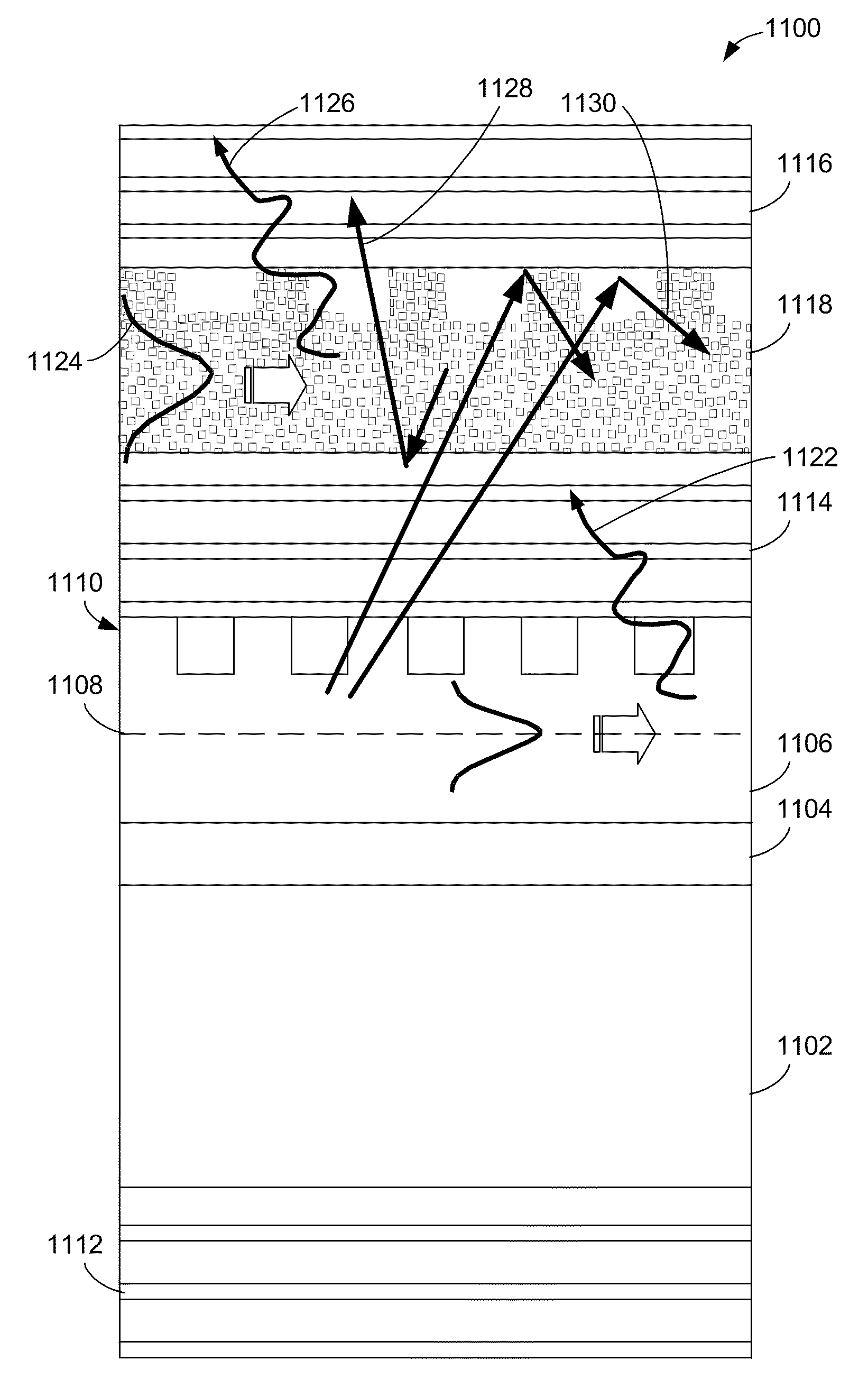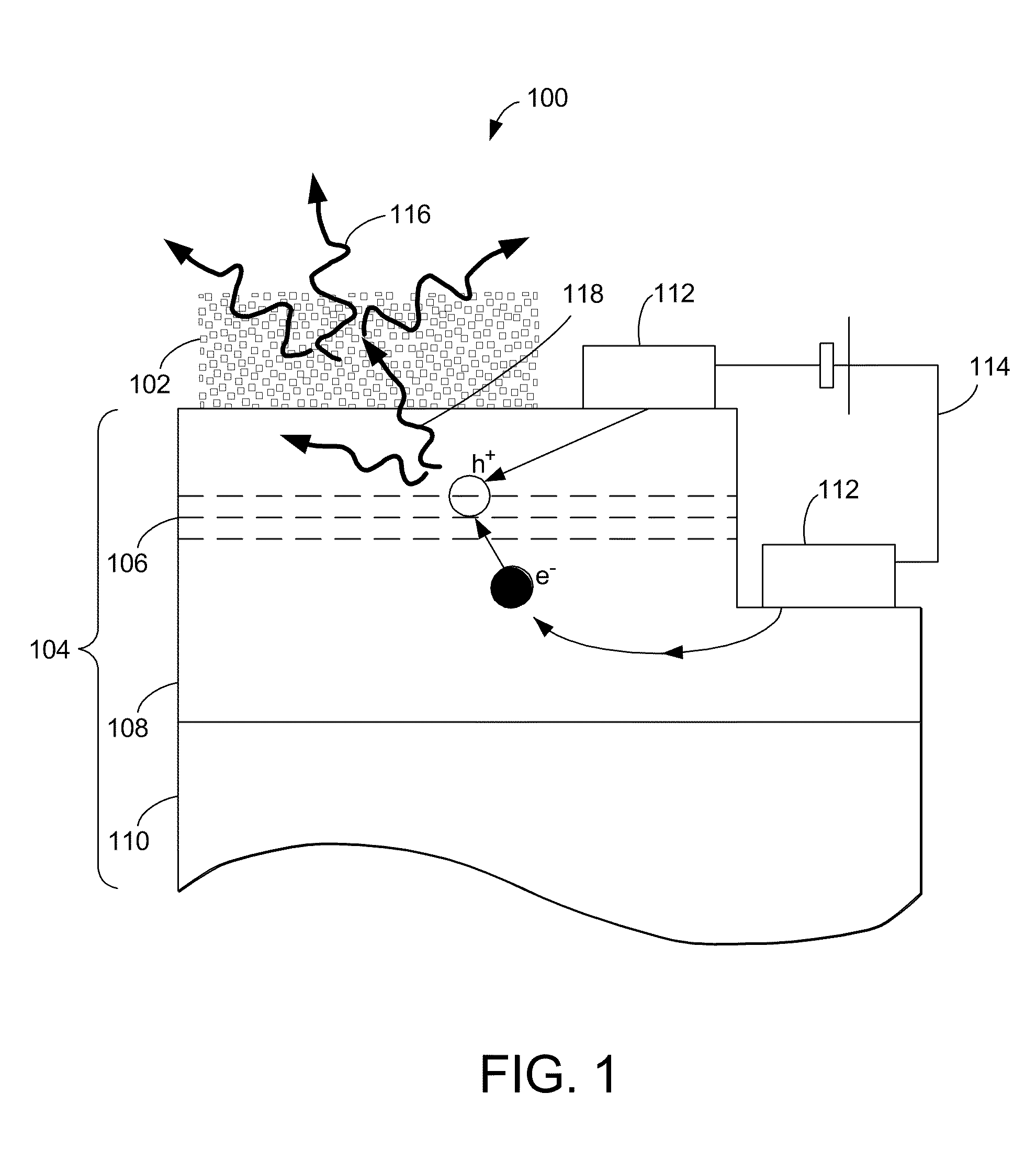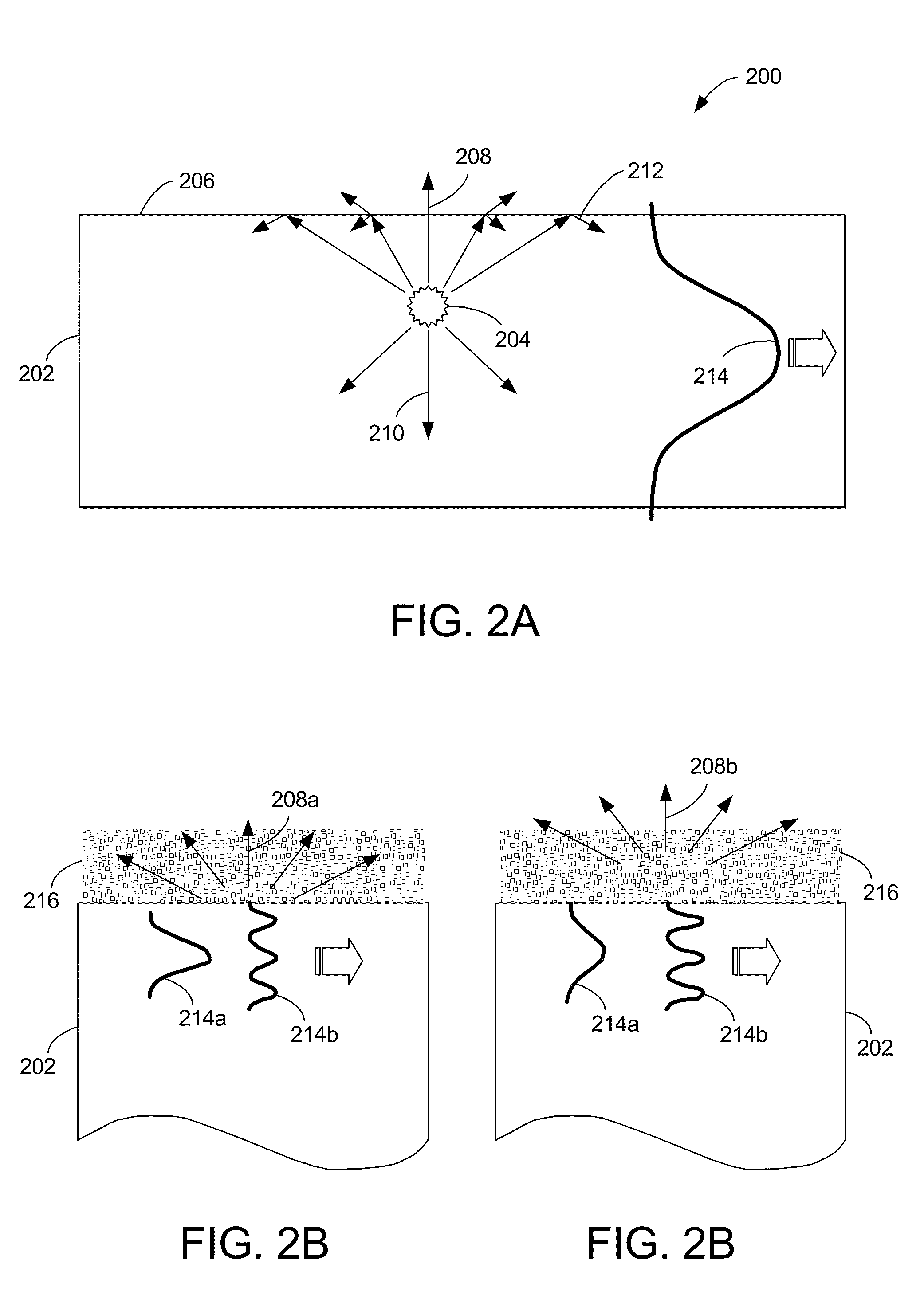Photonic structures for efficient light extraction and conversion in multi-color light emitting devices
a light-emitting device and photonic structure technology, applied in the field of photonic crystals and light-emitting diodes, can solve the problems of other colored light generation, lack of efficiency of green-yellow visible spectrum, and combination of different colors on a single substrate, so as to achieve high light extraction efficiency, efficient excitation of the ses, and high efficiency
- Summary
- Abstract
- Description
- Claims
- Application Information
AI Technical Summary
Benefits of technology
Problems solved by technology
Method used
Image
Examples
Embodiment Construction
[0052]In the following description of the preferred embodiment, reference is made to the accompanying drawings which form a part hereof, and in which is shown by way of illustration a specific embodiment in which the invention may be practiced. It is to be understood that other embodiments may be utilized and structural changes may be made without departing from the scope of the present invention.
[0053]Overview
[0054]The present invention describes new multiple-light sources LEDs that provide increased light extraction and conversion efficiencies, as well as increased brightness, while retaining planar structures. The LEDs contain several emitting species, each providing light emission in a range of wavelengths. Some of the species are electrically-pumped, while other species are optically-pumped. Photonic crystals, acting as diffraction gratings, ensure efficient light extraction, efficient excitation of the optically-pumped species, and / or provide with a means for modifying the far...
PUM
 Login to View More
Login to View More Abstract
Description
Claims
Application Information
 Login to View More
Login to View More - R&D
- Intellectual Property
- Life Sciences
- Materials
- Tech Scout
- Unparalleled Data Quality
- Higher Quality Content
- 60% Fewer Hallucinations
Browse by: Latest US Patents, China's latest patents, Technical Efficacy Thesaurus, Application Domain, Technology Topic, Popular Technical Reports.
© 2025 PatSnap. All rights reserved.Legal|Privacy policy|Modern Slavery Act Transparency Statement|Sitemap|About US| Contact US: help@patsnap.com



